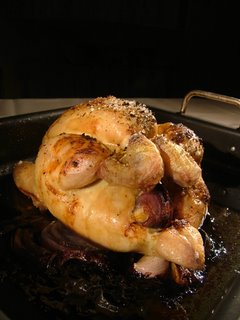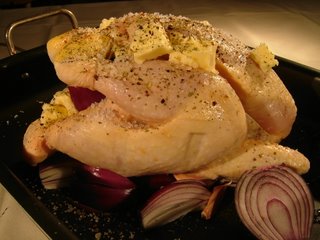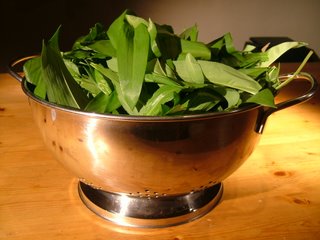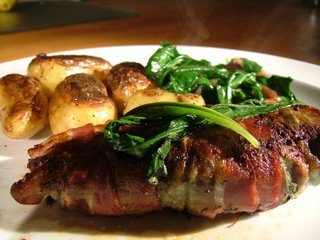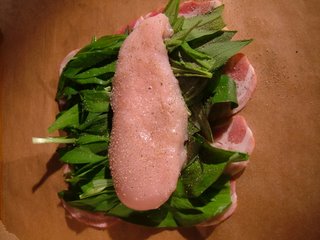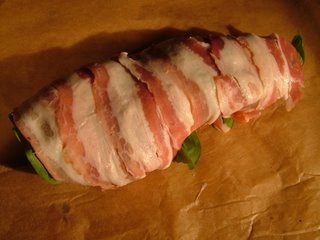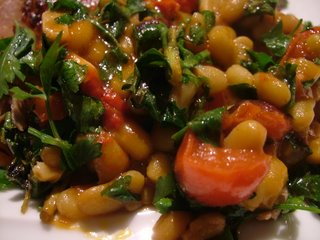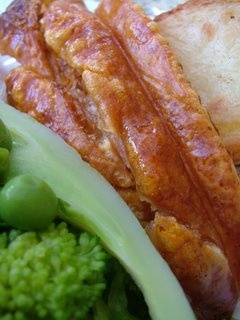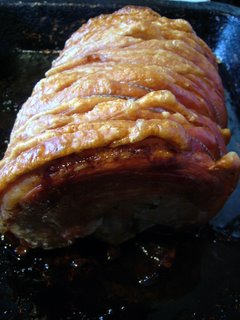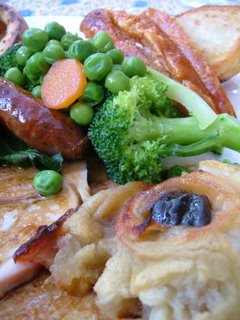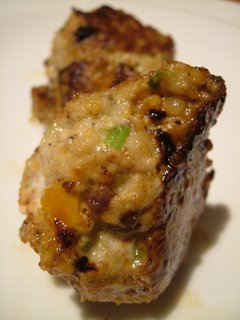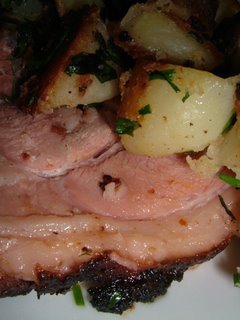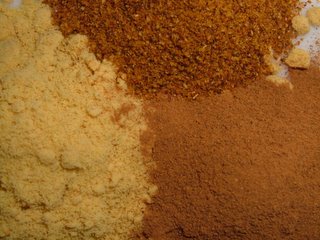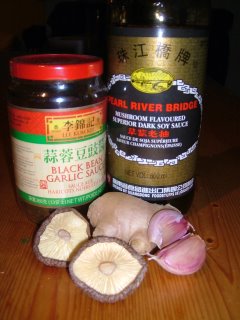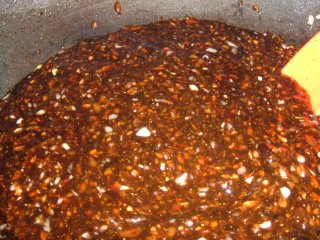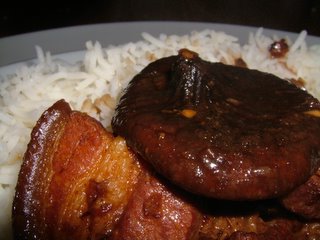Waitrose usually carries at least one seasonal wild mushroom, with several on the shelves in the autumn. At the moment, it’ s mousseron mushrooms, usually called the fairy ring mushroom in the UK. (Not by Waitrose, though – perhaps mousseron sounds more tasty.) The fairy ring is a tender, round-capped, yellow fungus with a subtle but delicious flavour. It’s the mushroom you see growing in circles in lawns, and you can pick your own – but do be careful to check any mushrooms you pick in the wild in a good mushroom identification book. I’d recommend Peter Jordan’s Mushroom Picker’s Foolproof Field Guide.
Thyme, garlic and the slight tang of crème fraîche are gorgeous with these little mushrooms. They’re pretty tiny and shrink down further on cooking, so to eat them as an accompaniment you’ll need a few boxes of them. To make them go as far as you can, you can use the mushrooms to make a sauce. Like this, they’re wonderful with chicken. I was only able to find chicken without skin, so I wrapped pancetta around it to add a little fat and to keep the moisture in. If you’ve got good chicken breasts with skin on, you can leave the pancetta out if you like; just brown the skin well when you saute.
To serve two, you’ll need:
2 plump chicken breasts
6 slices pancetta
1 punnet fairy ring (mousseron) mushrooms
4 shallots, diced
2 cloves garlic, chopped finely
2 tablespoons crème fraîche
A few sprigs of thyme
Butter for sauteeing
Salt and pepper
Place a sprig of thyme on each chicken breast, and wrap pancetta around the breast, holding the thyme in place. You shouldn’t need to secure it; as the pancetta cooks, it will stop being flexible enough to unroll. Saute gently for about eight minutes per side, until the pancetta is golden-brown.
While you saute the chicken, melt some butter in another small pan and soften the shallots and garlic. When the shallots are transluscent, add the mushrooms and a sprig of thyme. Saute, keeping everything on the move, until the mushrooms are cooked and soft.
Add the crème fraîche to the mushroom pan, stir briskly until everything is amalgamated, and season. Put a pool of the mushroom sauce on each plate and place the cooked chicken on top. I served this with mashed potatoes, and a green salad with a sharp dressing.


